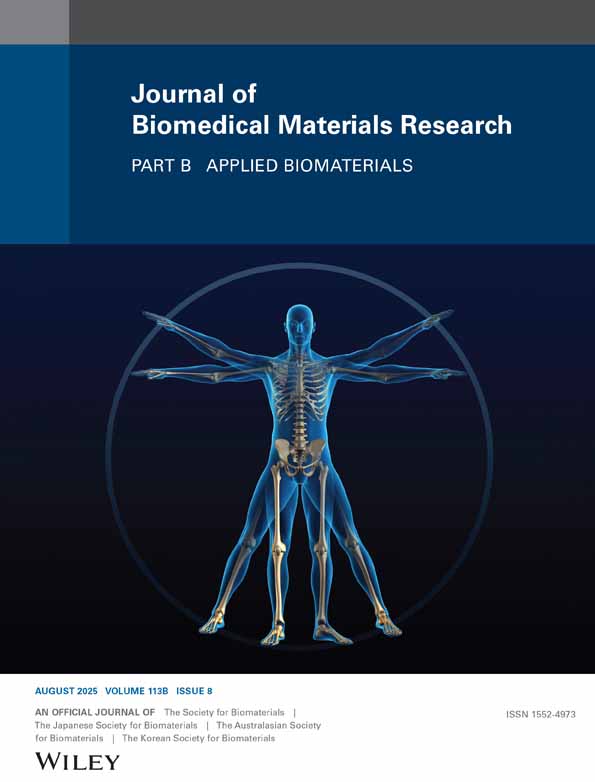Raman spectroscopic study of remelting and annealing-induced effects on microstructure and compressive deformation behavior of highly crosslinked UHMWPE for total hip arthroplasty
Abstract
Three-dimensional crystallographic morphologies were studied by means of confocal/polarized Raman spectroscopy as developed upon manufacturing in three different types of first and second generation highly crosslinked UHMWPE (HXLPE) acetabular liners. The impact of such microstructural characteristics on the deformation behavior of the liners was also evaluated and discussed from the viewpoint of molecular chain mobility. All the investigated liners showed similar microstructural transitions within the first 35 μm below their surfaces in terms of crystallinity, molecular orientation, and crystalline anisotropy. Interestingly, different postirradiation heat treatments (remelting or annealing in single step or in sequential steps) led to clear differences in the subsurface microstructure among the three liners. Remelted liner possessed both lower bulk crystallinity and degree of molecular orientation as compared to the annealed liners. Sequentially, irradiated/annealed liner showed the highest degree of crystallinity and orientation among the studied liners. The peculiar microstructure of this latter liner exhibited the highest restoring (shape-recovery) force against the applied uniaxial strain. Accordingly, the present study suggests that the sequential irradiation and annealing offers an efficient way to obtain microstructure quite suitable for attaining high creep resistance. However, all the investigated liners exhibited the significantly low values of surface anisotropy, which could be equally efficient in minimizing strain-softening-assisted wear phenomena. © 2014 Wiley Periodicals, Inc. J Biomed Mater Res Part B: Appl Biomater, 102B: 1762–1770, 2014.




